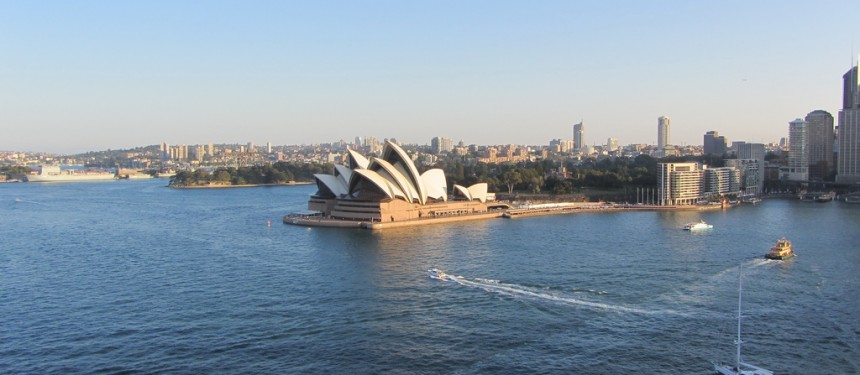Australia’s higher education sector was responsible for almost 70% of total international education exports in 2013, data released by the Ministry of Education has shown. International education activity contributed $15 billion to Australia’s economy in 2013, up 3.8% on the previous year’s $14.5 billion – the first increase in three years.
News and business analysis for Professionals in International Education
Have some pie!
Australia: ed export income up for first time since 2010
 View from Sydney Harbour Bridge in New South Wales, which generated $5.5 billion in income from international education. Photo: Robert Linsdell.
View from Sydney Harbour Bridge in New South Wales, which generated $5.5 billion in income from international education. Photo: Robert Linsdell. The upturn is good news for Australia’s largest export services industry, although income has yet to return to its post-slump peak of $16.1 billion in 2010.
“South Korean and Pakistani students increased the most, up by 14.8% and 27.9% respectively”
The higher education sector’s share of export income rose from 67% in 2012 to 68.2% or $10.2 billion in 2013, while income from English Language Intensive Courses for Overseas Students (ELICOS) also increased to $807 million (5.4%), up from $687 million, along with non-awarding courses at $545 million (3.6%).
Meanwhile, schools saw a slight decrease from $592 million to $579 million (3.9%) and the Vocational and Educational Training (VET) sector was down from 18.4% to 16.5%, or $2.5 billion of total income.
A spokeperson for the Australian Council for Private Education and Training (ACPET) told The PIE News that most of the growth in the sector is “driven by favourable visa treatment for our public universities and their partners”.
However, she added that the council is “optimistic” that it will see a similar increase in the non-university sector in the next few years, thanks to the recent extension of Streamlined Visa Processing to non-university providers.
China maintains its position as the leading market for exports, generating over a quarter of export income after a 2.4% increase on last year, followed by India, with 8.3%.
The largest increases, however, come from the third and tenth markets, South Korea and Pakistan, up by 14.8% and 27.9% respectively.
“Korea has always been a roller coaster student source country,” Phil Honeywood, National Executive Director of the International Education Association of Australia (IEAA) told The PIE News, but said that Korean parents are now more willing to spend money on sending their children abroad as their economy is improving.
Tight restrictions on working in the UK, the most popular study destination for Pakistan, have contributed to a rise in incoming Pakistani higher education student numbers to Australia, where they are still allowed two years’ post-study work, according to Honeywood.
“For Pakistan, it has taken them some time to understand that Australia is now very much a higher education destination country and that it is difficult now for them to come to Australia and study VET programmes,” Honeywood added.
Tight restrictions on working in the UK have contributed to a rise in incoming Pakistani student numbers
The research also highlighted a hefty increase in royalties from education services. The 32% bump – compared to the 3.8% increase in income from education related travel services and 2.3% from other educational services – is down to strategic offshore delivery.
Honeywood confirmed that many Australian providers, particularly public TAFE institutes, have chosen to focus on Asian markets, but have found the costs of direct delivery to be “substantial”, and cannot be mitigated by merely increasing tuition fees.
“On this basis they are increasingly entering into arrangements with offshore education providers who deliver the Australian curriculum under licence and pay royalties to the Australian based originating institution,” he explained.
New South Wales and Victoria remain the highest income states, generating $5.5 and $4.5 billion respectively, followed by Queensland and Western Australia.
Correspondence courses are the only notable exception to across the board growth. Numbers fell by over a quarter as they are replaced by MOOCs and advanced software courses delivered through blended learning.
Still looking? Find by category:



12 Responses to Australia: ed export income up for first time since 2010